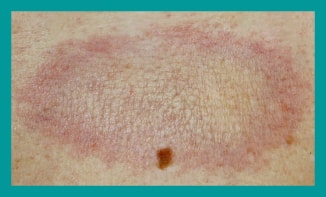Scleroderma Treatment London

Our Scleroderma treatment London clinic approaches the whole patient and not just their skin.
Scleroderma, or systemic sclerosis, is a chronic connective tissue disease generally classified as one of the autoimmune rheumatic diseases. The word “scleroderma” comes from two Greek words: “sclero” meaning hard, and “derma” meaning skin. Hardening of the skin is one of the most visible manifestations of the disease.
Scleroderma affects women more often than men and most commonly occurs between the ages of 30 and 50.
Symptoms
Scleroderma’s signs and symptoms vary, depending on which parts of your body are affected:
- Skin. Nearly everyone who has scleroderma experiences a hardening and tightening of patches of skin.
- Fingers or toes. One of the earliest signs of systemic scleroderma is Raynaud’s disease, which causes the small blood vessels in your fingers and toes to contract in response to cold temperatures or emotional distress. When this happens, your fingers or toes may turn blue or feel painful or numb.
- Digestive system. Scleroderma can cause a variety of digestive symptoms, depending on which part of the digestive tract is affected.
- Heart, lungs or kidneys. Scleroderma can affect the function of the heart, lungs or kidneys to varying degrees. These problems, if left untreated, can become life-threatening.
Causes
Scleroderma results from an overproduction and accumulation of collagen in body tissues. Collagen is a fibrous type of protein that makes up your body’s connective tissues, including your skin. The body’s immune system appears to play a role in its development. Most likely, scleroderma is caused by a combination of factors, including immune system problems, genetics and environmental triggers; all of which can be well addressed with non pharmaceutical medicine.
“I first became a patient of Deborah Grant in April this year. Eight years ago I visited the local surgery with what I thought was an infected splinter in my finger. When it didn’t respond to antibiotics my doctor said that she strongly suspected that I had CREST. I had suffered from Raynaud’s disease for some years and in addition to the white fingers, I had noticed red ‘dots’ on my fingers, hands, lips and cheeks in the last couple of years. Ulcers in the form of a nasty thick yellowish liquid, or worse, hard gravel-like lumps poking out of my finger and thumb were very painful, ugly and causing me distress.
This diagnosis was confirmed by a well -respected consultant rheumatologist, who tested my heart, swallowing, and could not have been more thorough. He informed me, however, that my symptoms were something that I would just have to cope with – and that there is no evidence whatever that diet could play a part in reducing the pain, inflammation, and general misery of this condition.
Having been to visit Deborah Grant on five occasions, by visit two I was conscious that the pain had almost disappeared and the swelling was far less. Four months later I am astonished to find I can use my hands almost normally and although I can still feel the lumps, there are no ulcers. The red dots have not changed, but white fingers are rare (this is summer so I have yet to discover whether I will have to go back on to traditional medicine to improve my circulation). From feeling that I was doomed, and that this condition would steadily worsen over the years, I am thoroughly excited that there is a way through diet, lifestyle and natural substances that can change everything. At the moment I feel that the progress of the disease had stopped in its tracks, whether it can be reversed is yet to be seen. I hope that this will bring hope for the people that suffer from this very unusual disease, most of whom have it in a very much more severe form than myself.” Tania R K – Oxfordshire
Scleroderma Treatment
Our Scleroderma treatment London consists of carefully chosen functional medicine tests along with treatment tailored to meet each patient’s unique needs. We do not practice a one size fits all approach.
We also address any gut issues, which often accompany this condition.
References
Localized cutaneous scleroderma.
If you would like to book an appointment for Scleroderma treatment
Contact Deborah’s Medical Secretary for an appointment